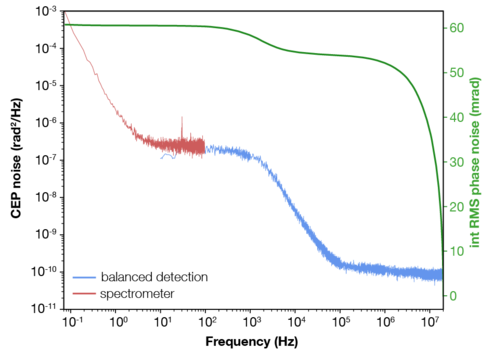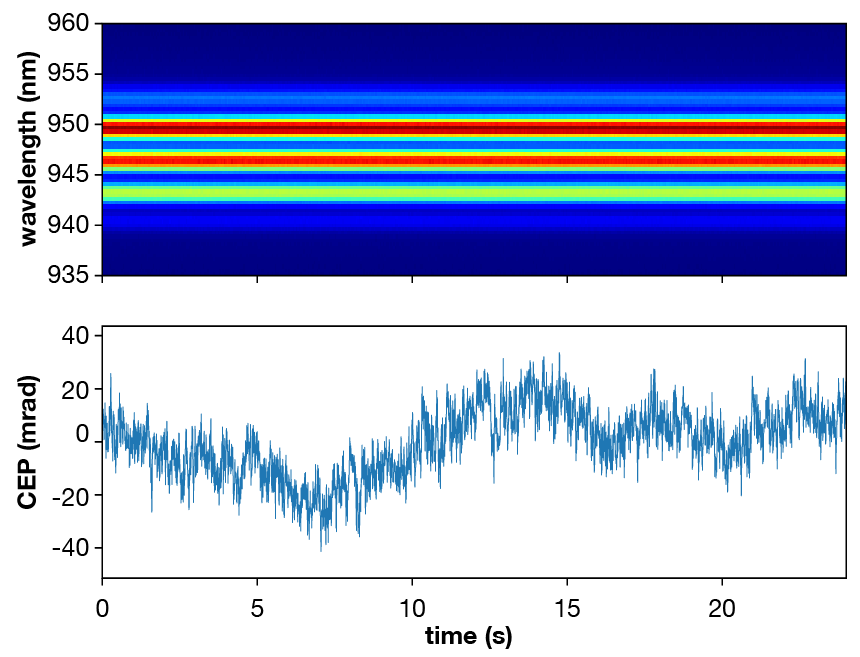Ultra-low CEP noise
Integrated phase noise of the DFC CORE +

- 34 mrad [70 mHz – 2 MHz]
- 61 mrad [70 mHz – 20 MHz]
- 135 mrad [70 mHz – 40 MHz]
The carrier envelope offset frequency fCEO of the DFC CORE + is zero because of the DFG process implemented in the CERO-Technology . Since it is hard to measure a signal at the frequency origin (0 Hz) we use a method first described by Liehl at al. to characterize the carrier envelope phase (CEP) noise.
An fCEO-free output of the DFC CORE + is amplified and broadened to an octave spanning supercontinuum to implement a modified f-2f setup like shown in figure 1. The long-wave part of the spectrum is frequency doubled and overlapped with the short-wave part at 950 nm. The resulting interference fringes are then filtered with optical bandpass filters and detected with a balanced photo detector. The resulting sinusoidal signal can be sampled up to high frequencies .

Figure 2 shows the ultra-low phase noise of the DFC CORE + measured according to Liehl et al. The long-term CEP stability can be characterized if the bandpass filters and balanced detection from figure 1 is replaced by a spectrometer (spectral interferometry). The interference fringes do show a very high modulation contrast of 97 %.

Figure 3 shows a time trace of the fringes over 25 seconds and the CEP which has been extracted by Fourier transformation.
We deduce 12 mrad phase stability in 25 seconds.

- high modulation contrast -> 97 %
- high degree of CEP short term stability
- Stability limited by slow drift of the interferometer
- 12 mrad (rms) phase stability in 20 s
